Evidence suggests women have the right stuff to be safe pilots and engineers. So why aren’t more of them doing it?
‘… when I think of women on planes, I don’t think of women as pilots. I think of them more as tray carriers and stuff … ’ (High school focus group participant—Gibbon, 2014)
There is a safety issue about women pilots. But it’s imaginary. It resides entirely in the heads of some male pilots (and, incredibly, a few women), but strenuous research can find no trace of it in the real world.
The real issue is not the safety of women as pilots, but the wrongheaded thinking that leads to almost half the population overlooking aviation as a career choice.
Who’s taking over?
It’s no secret that there is a general shortfall of pilots and maintenance staff in aviation.
According to the 2014 Boeing Pilot and Technician Outlook an estimated 533,000 new commercial airline pilots and 584,000 new maintenance technicians will be needed to fly and maintain the world fleet over the next 20 years.
Boeing says the Asia Pacific region will see the largest growth in demand and will require 216,000 new pilots, while:
- Europe will require 94,000
- North America—88,000
- Middle East—55,000
- Latin America—45,000
- Commonwealth of Independent States (CIS)—18,000
- Africa—17,000.
The world won’t just need more pilots—the need for maintenance personnel will greatly increase too. Once again, the Asia Pacific region represents the greatest demand and will require 224,000 new technical personnel while:
- airlines in Europe will require 102,000
- North America—109,000
- Middle East—62,000
- Latin America—44,000
- CIS—24,000
- Africa—19,000.
In the face of this demand it makes sense then to recruit from, and retain, the other 50 per cent of the population to fly and maintain aircraft. However, the female pilot is a rarity—estimated worldwide numbers are at about five per cent. At Australia’s major airlines that percentage varies from 4.5 per cent to 9.3 per cent.
Even with the 2014 appointment of Georgina Sutton as Australia’s first major airline female chief pilot at Jetstar—one of the few women in the world to have held the top pilot job at a major airline globally—the reasons for the low numbers of women entering into both general aviation and commercial flying remain unresolved.
Women, including Australian women, have been flying for almost as long as there have been aeroplanes. Yet despite this, piloting remains less attractive to women than other ‘non-traditional’ female occupations, including engineering.
What safety issue?
According to a survey of pilots from Australia, South Africa and the USA, (conducted by Mitchell, Krsitivics & Vermeulen [2005]), safety-related comments were very low in Australia at only two per cent—most likely due to that fact that comparatively, gender does not play a significant part in a pilot’s safety orientation.
Safety orientation—which includes safety consciousness, attention to detail, situational awareness and prudence—relates to the perceptions of risk-taking levels among pilots of a particular gender.
‘In terms of the evidence there is nothing to suggest that female and male pilots are any different in terms of safety levels,’ says Tracy Lamb, former Virgin Australia senior first officer and now aviation advisor with SGS Hart Aviation.
‘Where they are different—and this has been proven—is that they are different in the communication and management styles and in some aspects [female pilots] have even been shown to be safer with respect to their ability to multi-task and communicate.
‘But on an actual skill level I believe at the end of the day we are all just pilots and we perform as individual pilots.’
FlyOz chief flying instructor, Lyn Gray, agrees that female students are less likely to take risks and are often easier to teach than their male counterparts.
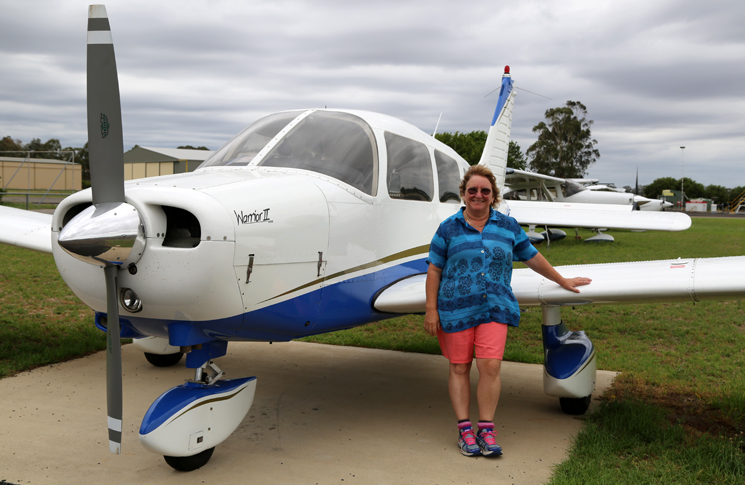
‘Women are easier to instruct—by a long way,’ she says. ‘They come with no pre-conceived ideas. The come with the notion that they want to learn how to fly and that they are the student and you are the instructor … they’re more thorough with their homework and they research and email questions.’
Gray—who currently has three female students of various ages and stages of life on her books—finds that women, ‘tend to be more checklist oriented.’
‘They’re methodical. A lot of them are very thorough pre-flighters. They do tend to be more stable, not risk-takers—sometimes the young men tend to be more “they know it and instructors are a nuisance”. However, most of [my students] have a solid head on their shoulders—especially if they’re training for a career in aviation—they take the threat and error management stuff pretty seriously.’
However, the comments from the survey indicated that the male pilots tended to judge female pilots to be less safe, while female pilots had a greater belief in their safety orientation.
… The majority of comments on the issue of safety standards came from predominantly male airline pilots … who expressed that as long as female pilots were evaluated by, and achieved the same standards, everything would be fine. Many indicated that they had seen or believed that female pilots had been treated more favourably in respect of meeting standards by the provision of extra training or allowances made for errors not afforded to male pilots.’
Dangerous attitudes—chauvinism, bullying and safety on the flight deck
Although the Mitchell, Krsitivics & Vermeulen (2005) survey found many female pilots reported that they had not experienced or were unaware of any prejudice directed towards them in their flying career Lamb says it was something she definitely encountered in her career.
‘In speaking with other female colleagues, bullying happens far more frequently that we like to admit,’ says Lamb ‘and talking about it can sometimes makes it feel worse, either in their environment or just within themselves’.
‘I got told by one captain as we were sitting on the tarmac in Darwin watching a young man in a beat-up old Chieftain who was clearly on some kind of freight run … and here we were sitting in our nice air-conditioned flight deck with our coffee and the captain looked out the window and said, “That boy would kill to have your job” and he almost basically said without saying the exact words was that I was taking [the young man’s] job. And I retaliated and said that, “Well I did eleven years of that, so I deserve to be here.”’
‘That set up a working barrier to our working relationship because I sincerely felt I was not a valued member of his team. I was someone who had to be there and he believed that I didn’t deserve to be there. Chauvinism changes the dynamic in the flight deck dramatically.’
‘The same individual I must point out was someone who bullied male pilots as well and I think it must be put into perspective that it does exist, it is out there, and usually it’s the type of man who will not only bully a female, but will often bully males as well.’
In her own 20-year career as a pilot and flight instructor Gray said she’s only had one male student flat out refuse to train with her.
‘I had one guy when I was teaching in Bankstown who didn’t want to be instructed by a woman about eight years ago … he just said “That’s interesting”.’
Brawn versus brain?
It was once argued that female pilots did not have the strength to manipulate the controls in emergencies and that generally, women were too short to reach and operate the rudder pedals effectively. (Although this did not stop women flying for the Air Transport Auxiliary during World War II from safely flying heavy bombers, often operating multi-crew aircraft as solo pilots.) Power-assisted, auto-trimmed and fly-by-wire controls mean this is no longer the case, if indeed it was an issue.
‘Perhaps in the early 50s you needed to be physically a bit stronger to handle some of the older-type aircraft that didn’t have hydraulics but that ended in the 50s,’ Lamb says.’
‘That’s finished. We have hydraulics now, we have “power steering”—it’s not a problem now. The aircraft of today and the future is all about systems management and people management, so it’s a brain game.’
The evidence
The balance of academic studies into gender and flight safety suggest that, as a group, women are slightly safer than men:
- A 1986 study by Vail and Ekman found male pilots had higher accident rates than women and men were more likely to have fatal accidents.
- A 1996 study by McFadden found that when adjusted for age and experience, as commercial pilots, women and men had the same accident rates.
- A study of US general aviation crashes (Baker et al., 2001) looked at the causes, rather than the rates of crashes. It found ‘mishandling of aircraft kinetics’ was the most common error among pilots of both genders. But it was a cause for 81 per cent of female pilot accidents and 48 per cent of male pilot crashes. Crashes by male pilots were more likely to involve flawed decisions, the study found.
‘In general, the women made better decisions, and most of the women‘s crashes involved stick-and-rudder skills,’ lead author Susan Baker (herself a pilot) said.
The more serious accidents involving fatalities and serious injuries (19 per cent plus an additional 12 per cent respectively) were with male pilots, while crashes with female pilots were 15 per cent and seven per cent respectively.
A 2011 study by Bazarggan and Guzvha looked at 40,000 GA accidents in the US and found no relationship between gender and pilot error.
Trolley dollys vs pilots
So if safety isn’t the main issue for the lack of female pilots, what is?
In the book Absent Aviators, academic and RAAF officer, Deanne Gibbon, says there’s a perception that young girls view piloting as: ‘difficult, dangerous and not a job for girls’, but they’re more than happy to become flight attendants.
Gray—who was a school teacher for 22 years before she transitioned to aviation—believes that, ‘A lot of women don’t think they can fly because they think it’s not for them, or they lack the confidence to do it.’
Lamb believes the way to change the mind-set is to increase awareness.
‘We’re trained from a very young age into gender-specific roles,’ Lamb says. ‘And a lot of that is unconscious—little girls wear pink and they wear dresses. And it starts from there.
‘I think the way to get through is for the earliest age possible and I think public awareness and parental awareness, awareness in schools, universities and training organisations are definitely the way to go. Because a lot of the gender conditioning that we see at the moment—which is really the only reason that’s stopping young women from having a career in aviation aerospace—is because the simple fact is a lot of them don’t even think about it.’


Timeline of Australian female pilot firsts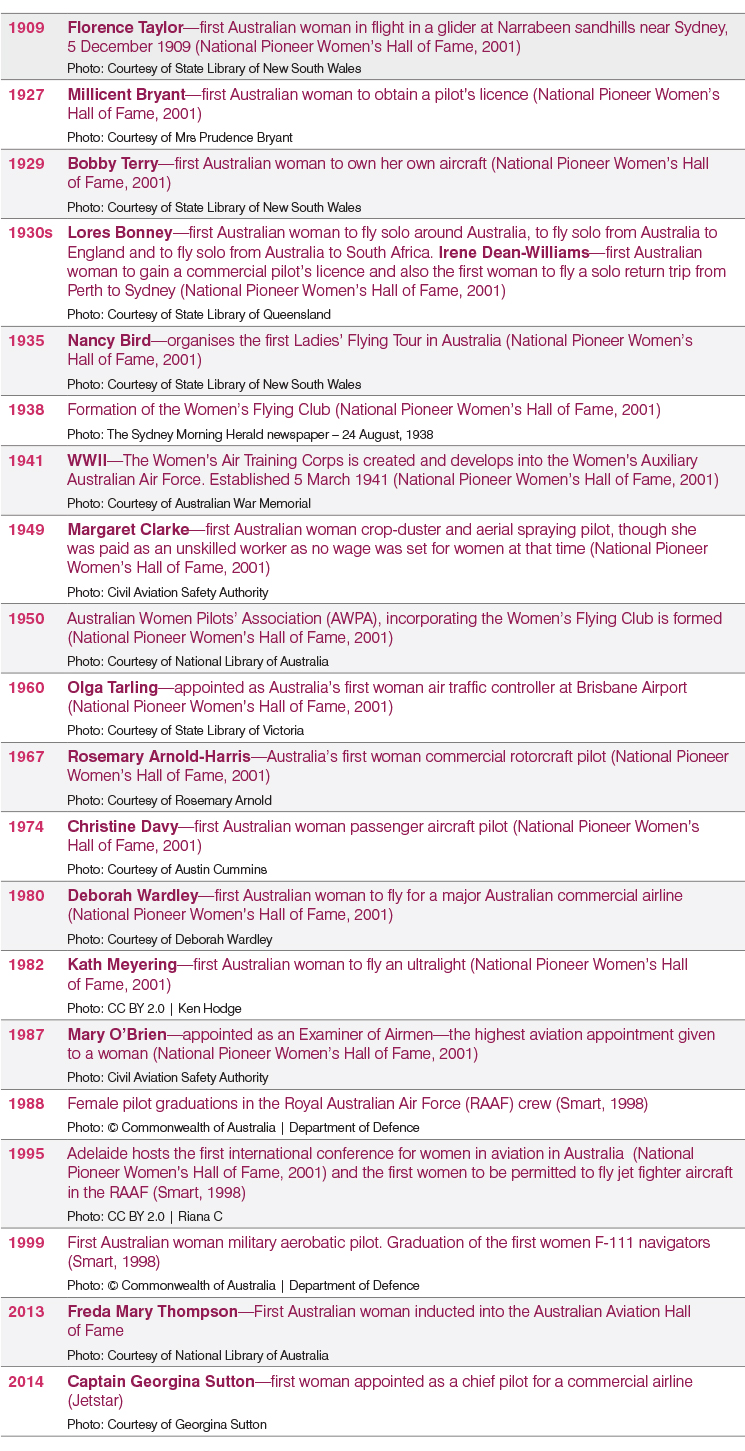
Timeline sourced from: Absent Aviators: gender issues in aviation (2014), Ch 7: Another empty kitchen: gender issues on the flight deck, Jim Mitchell, Alexandra Kristovics and Leopold P. Vermeulen, pg 168-9

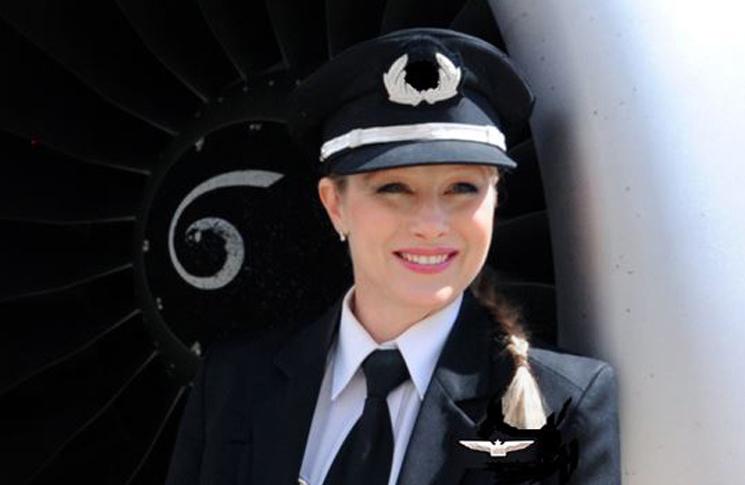


















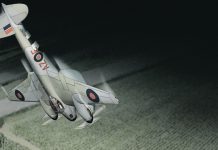
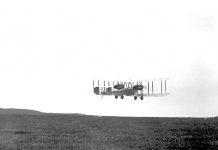


It is a pity that the compiler of this article chose to use a picture of a woman apparently about to attempt to start the Auster’s engine by swinging the a prop the wrong way!
Actually, she was being pro-active and checking the prop (physically) for damage, dings, imperfections, cracks and the like. I can now see why females get it hard in this profession. The immediate assumption of any male is that the girl is ‘apparently” doing it wrong.
She’s preflighting…. Checking the leading edge!
I think it’s worth pointing out that general interest has a factor to play. The simple fact is that far more males are interested in aviation than females. It’s just more of a ‘blokey’ activity.
I’m not denying there’s sexism in the industry, and I believe women can be just as good pilots as men. But it’s good to remember that the main reason the majority of pilots and engineers are male is the same reason the majority of hairdressers are female – because that’s what each sex is generally more interested in.
Similarly, most stunt and race-car drivers are male. And most child-care workers are female.
The list of gender imbalance in various industries can go on forever, and it’s mostly because of general preferences by each sex, not because of sexism or lack of marketing to one side.
@Keps, you’ve entirely missed the point – there’s a reason why each sex is “generally more interested in” certain activities, and that’s gender conditioning, which starts from a very early age (as mentioned in the last few paras of the article)
If you look at it from a University/Tafe level, there are still more males over females, not just in aviation, but also in Engineering. One of the biggest complaints is the rampant sexism which makes females feel inferior, even when they aren’t. This has been cited in numerous cases by several large Australian Universities to the degree that many now have targeted recruitment and retainment programmes for females in these fields.
The fields are not more ‘blokey’. It is a cultural issue that is systemic and the only way to change it is to follow the path of many leading institutions by coming down hard on perpetrators – naming, shaming and removing men who feel they are incapable of working in an equalized field.
The sexism that inhibits women form taking on traditionally male roles comes from both women and men. It is often their mothers who teach men to be sexist.
I know from personal experience that confrontation is not the best way to change things. I know I have removed many barriers and changed opinions by just going about my business, being competent and earning respect. The women who have come after me have had a much easier path. There have been many men who have supported my journey and I appreciate all their help.
I studied mechanical engineering in the 1980s. In most of my lectures I was the only female. I hope this has changed. But it is a slow process.
The females outperformed (thrashed) the males during the astronaut selection process in the 1960’s and it was only the ‘influential’ males that impeded their involvement in the space programmes that followed…yet their involvement in aerospace has increased steadily ever since and I look forward to their increased involvement and competence as time progresses as it will only be for the better.
[…] You can read more about the growing demand and the role of women in aviation in the Flight Safety Australia article Women’s work. […]
A name that is missing from the above list is that of Phyllis Arnott. It was my understanding that she was the first Australian woman to gain a commercial pilot’s licence, although credit is given in the article to Irene Dean-Williams. Either way, it is good to see that the contribution of female aviators is recognised.
(see Sydney Morning Herald 24 Feb 1931 trove.nla.gov.au/newspaper/article/16756791
In recognition of her achievement Qantas named an A380 aircraft after her – VH-OQL Phyllis Arnott
Please note, as the incorrect information has been published before:
28.06.1929 ARNOTT , PHYLLIS R MIss “A” licence No 330 : 28..1931 “B” licence No 334 NSW DH 60 Moth
FIRST AUSTRALIAN WOMAN TO GAIN A COMMERCIAL PILOT’S LICENCE (also NSW)
30.05.1931 WILLIAMS, Irene S Miss “A” licence No 775 : 30.01.1933 “B” ” No 416 WA DH 60 Moth
(Irene Dean Williams) Commercial pilot – First in WA and 5th to gain a commercial pilot’s licence in Australia.
The “B” licence numbers clarify any queries:
Arnott 334 (NSW) : Terry 354 (NSW) : Griffiths 369 (NSW) : Thompson 390 (Vic) : Bonney 408 (QLD) : Williams 416 (WA). Phyllis Arnott was one of the 6 women pilots who escorted Amy Johnson into Sydney in 1930.
[…] The examples above highlight that there is still some outmoded thinking about female pilots, but more than this, they made me wonder: is this why so few women enter the industry in the first place? The question of why more women are not flying is discussed at length in this previous Flight Safety Australia article ‘Women’s Work’. […]
One challenge my 12 y/o daughter has faced is the negativity of other girls and women. I watched her being told by a woman that flying ‘isn’t really for girls’. I explained later to my daughter about the pioneering women in aviation in Australia and around the world.
I spoke to a national women’s aviation group to see if there was a path for girls who were interested in aviation (thinking there may be a mentoring group or support for girls, given it can be lonely for a girl training with men). They said that the group was more for women and that they didn’t really have any activities or programs for school aged girls (17 was as young as they would go).
I did manage to convince my daughter to come to a fly-in. It was pretty bad weather so it was a very small turn-out and there were no female pilots there, unfortunately. However, all of the male pilots were happy to show her around their aircraft and show here what the controls and instruments did. In general I’ve found men to be very encouraging of kids getting into aviation, regardless of gender. Hopefully that translates into more girls believing that flying is something women can do and will be respected for.
Why is there few women in aviation? Women can fly & are able to give birth, men can’t do the latter, each of the species has a purpose, it’s really that simple !
You really should keep your sexist opinion to your self.
There are a few gaps in the timeline of women pilots first. Joe Bjeilke Peterson and a female pilot – Beryl someone. There were few female instructors in the 70s. I remember there being one at Tamworth Aero Club.
There were quite a few significant events in the gliding fraternity as well.
As for why women are not more involved – the men just make it to hard for us. It takes a very driven person to persist when so many barriers are put in your way. I look back at the obstacles that were put in mothers way. She flew gliders and light aircraft from the late 60s onwards. Some of the things that were done to her are horrendous and unforgivable.
In the late 70s and early 80s I contemplated a career in aviation. After my mothers experiences I decided it could only lead to a lot of unhappiness. I am a degree qualified mechanical engineer. Doing that has been hard enough with all the barriers that have been put in my way and all the rude, insulting behaviour I have had to put up with. I know I have broken down lots of barriers for other women and I sure hope it is now much easier than it was for me.
Wonderful article(s) here. Thoroughly enjoyed all the comments. I was a flight attendant with Ansett following 5 years of training for registered nurse and midwife. Good to see more women ‘up front’
[…] Flight Safety Australia article ‘Women’s Work’ addressed this topic in some detail, with a focus on the fact that while gender only plays a […]
[…] Safety Australia has looked at women in aviation in a number of articles including Women’s Work published in 2015 and more recently in Where are all the […]